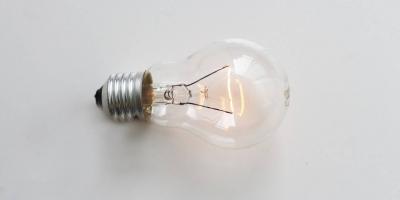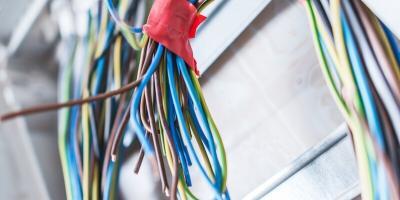With the amount of voltage distributed and running your circuits 24/7, one mishap can endanger properties and lives — on a scale you can’t even imagine.
Australian households and workplaces run on a 230V voltage and 50Hz frequency. That amount of electricity is enough to cause an electric shock to a person in contact with live wires. And this may lead to burns, injuries, or a heart attack in the worst-case scenario.
There are 1,100 reported electrical injuries in 2014-2016. And 73% of the total cases were due to contact with wires, switches, and current from domestic appliances and machines. Meanwhile, over 112 people (11%) were exposed to electric transmission lines.
That said, it is crucial to educate people on why electric shocks happen to avoid them from happening in the future. In this way, it can help save precious lives.
Listed below are some causes of electric shocks for you to take note and prevent:
Improper Handling of Electric Load
Appliances and devices are part of the circuit connection in each property. From the power supply, current travels through the wires to turn them on. However, a single circuit can only run a specific amount of electric load, which depends on the capacity of your circuit breakers. Usually, it has a 15-20 amp capacity, and exceeding this will trip the circuit breakers.
The recommended electric set-up is to have a single circuit for lighting fixtures, another one for low-powered appliances, and a separate dedicated circuit for each high-powered appliances such as heating system and washing machine.
If this is not the practice in your place, then overloading will likely happen in your circuits. It can damage your wires and cause them to break apart. Sometimes, the insulation sheathings pull out, leaving wires exposed.
Exposed wires are electric shock risks since people can accidentally make contact with them, especially mischievous and curious children.
Ignorance in Electrical Safety Measures
Prevention is better than cure. It is what most people say and should also be your mantra from now on. If you don’t know what the electrical safety measures are, you are more prone to an electrical shock accident.
And to avoid that, here are some safety measures you should follow:
- Organise appliances’ cables and make sure to untangle them from one another.
- Avoid plugging in devices to outlets with wet hands.
- Pull out the plug and not the cord when turning off an appliance.
- In replacing a bulb, turn off the switch first to make sure no current is flowing.
- Never attempt repairs since only licensed level 2 electricians can do them.
- If possible, educate yourself or attend basic training on first-aid procedures for cases of emergency.
Not Having Enough Safety Electrical Devices
As mentioned earlier, contact with exposed wires is the cause of an electric shock. So, keeping your wires in the top-notch condition will prevent it from happening. And one way to do that is to install safety electrical devices.
Circuit breakers or fuses are pre-installed safety devices before you move to a place, but they are still not enough protection from wiring faults that can soon cause an electric shock.
So to help you, here are some of the safety electrical devices you need to install:
Socket Covers
Socket covers help prevent accidental contact with outlets. Especially if you have playful kids, it is the best way to child-proof your home to avoid them from experiencing electrical injuries and burns.
Ground Fault Circuit Interrupter (GFCI)
A GFCI is a device that detects current changes, as small as 4 milliamps. When a power change occurs — human contact with wires included — it turns off the power supply within 10 milliseconds. And that is enough time to avoid the severe effects of an electric shock.
Residual Current Device (RCD)
An RCD also protects a person from harm in case of contact with a live wire. Moreover, it is a safety device that prevents fires from breaking out. It works by monitoring the current in your circuits. And when it moves to an unintended path, the device automatically shuts off the power supply, minimising the risk of electric shock.
For a more in-depth explanation of how it works and what are its different types, you can visit this article.
What to Do When Electric Shocks Happen
There are times when you can’t help to witness a person in electrical shock. So, to help you save a life. Here are some steps to do without being another victim:
- Before making contact with the victim, turn off the main power supply to ensure that electricity doesn’t flow anymore.
- Call an ambulance right away.
- Attend to the victim by checking pulses and breathing.
- If you’re a qualified first-aid responder, begin CPR when the victim is not breathing.
- Check for other injuries and burns.
- Apply bandages if possible.
- Keep calm and stay with the victim until the emergency responders arrive.
Conclusion
As you continue to depend on electricity to perform and finish everyday tasks, bear in mind that your wiring connection carries a great amount of voltage that can cause an electric shock to happen. To avoid this, make sure to eliminate any exposed wires in your property and protect your wires from hazards at all times.
Luckily, Gordon Powers is here to help you minimise the risk of electric shocks. With our efficient and top-quality electrical wiring services, you can say goodbye with all the exposed wires in your property. Moreover, our expert electricians can install circuit breakers, safety outlets, GFCIs, and RCDs to protect you from electric shocks.
Our customers’ safety is always our number one priority. So, don’t hesitate to call us at (02) 9199 7480 or send us a message via email.










